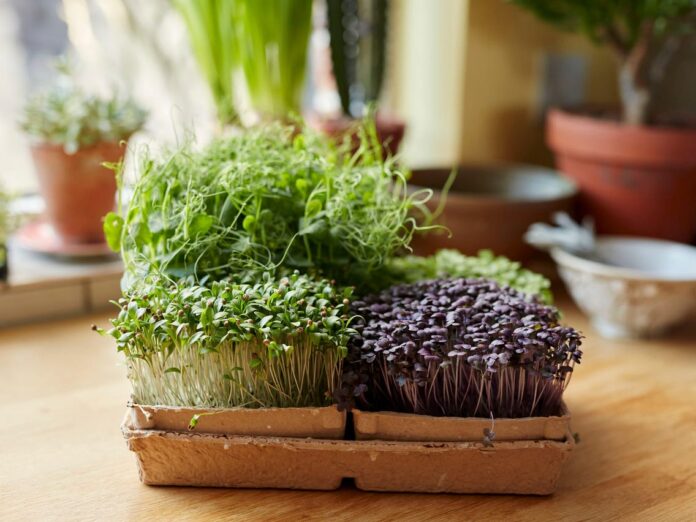
Are you interested in growing your own food but don’t have a lot of space or experience with gardening?
Microgreens might be the perfect solution for you! These tiny plants are packed with flavor and nutrients, and they’re easy to grow even if you don’t have a yard.
Choosing the Right Seeds
Exploring online options for seeds and supplies can be a convenient and efficient way to get started with microgreens system gardening. There are many reputable online retailers that offer a wide range of seeds, growing trays, and other supplies.
Many companies offer indoor gardening systems and services that utilize the advanced technology to grow high-quality microgreens. Some of these technologies may include hydroponics and LED lighting, which can create optimal growing conditions for plants.

Some companies also offer subscription services that provide users with a mobile app for remote monitoring and customized recommendations for optimal plant growth. In addition, companies may offer plant replacement programs to provide added value for beginners who may be new to gardening.
When exploring online options for supplies, it’s worth considering sites that offer advanced technology and services to make indoor gardening more accessible and user-friendly. By utilizing these tools and resources, beginners can learn to grow microgreens with greater ease and success.
When it comes to choosing seeds for your microgreen garden, you have a lot of options. Some popular choices include arugula, broccoli, radish, and sunflower, but you can also experiment with less common varieties like amaranth or basil. Look for seeds that are labeled specifically for microgreens, as these will be bred for fast germination and high yield.
Supplies Needed
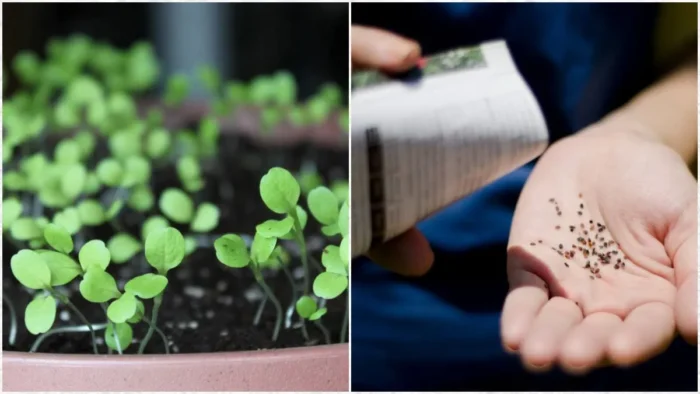
One of the great things about microgreens is that you don’t need a lot of space or equipment to get started. Here are the supplies you’ll need:
- Seeds
- Growing trays or containers
- Growing medium (such as potting soil or coconut coir)
- Water
- A spray bottle
- Light source (such as a grow light or sunny window)
Soil and Growing Medium
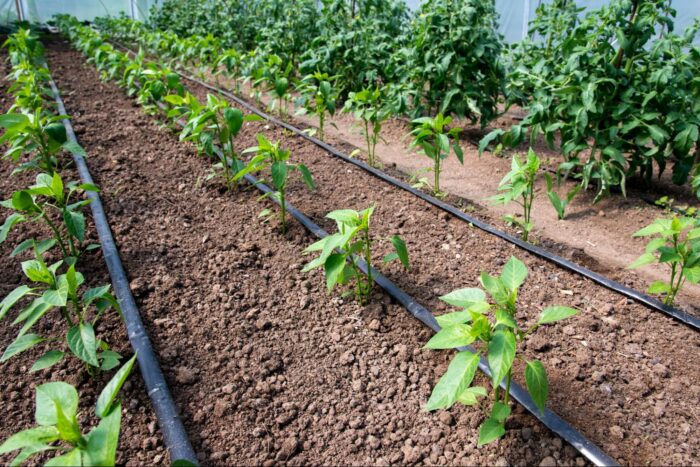
Microgreens can be grown in soil or without soil, using a growing medium like coconut coir. If you’re using soil, choose a high-quality potting mix that’s free of pesticides and fertilizers. Fill your growing tray or container with soil to a depth of about 1 inch, and tamp it down gently.
Watering and Fertilizing
Microgreens need to be kept moist but not waterlogged. Use a spray bottle to mist them with water once or twice a day, or water them from below by placing the tray in a shallow dish of water and letting it soak up the moisture. You don’t need to fertilize these plants, as they’ll get all the nutrients they need from the seed.
Lighting Requirements
Plants need plenty of light to grow strong and healthy. If you’re growing them indoors, you’ll need to provide a supplemental light source like a grow light. Position the light about 2-3 inches above the top of the soil, and leave it on for 12-16 hours a day. If you’re growing microgreens near a sunny window, make sure they get at least 6 hours of direct sunlight a day.
Sowing and Germinating
To sow your seeds, sprinkle them evenly over the top of the soil or growing medium. You can sow them densely, as they’ll only be growing for a few weeks. Cover the seeds with a thin layer of soil or growing medium, and mist them with water. Keep them in a warm, humid location until they germinate, which should happen in 2-7 days.
Caring for Plants as They Grow
As your plants grow, you’ll need to continue to provide them with proper care to ensure they reach their full potential.
Watering: As your microgreens continue to grow, you’ll need to adjust your watering schedule. Once the seeds have germinated, water them from below by placing the tray in a shallow dish of water and letting it soak up the moisture. As the plants grow taller, switch to misting them with a spray bottle once or twice a day to avoid disturbing their delicate roots.
Thinning: Once your plants have reached a height of about an inch, it’s time to thin them out. This will help prevent overcrowding, which can lead to disease and stunted growth. Use a pair of scissors to snip off the excess plants, leaving about an inch of space between each plant.
Lighting: As your greens grow taller, you may need to adjust the height of your grow light to keep it 2-3 inches above the top of the plants. If you’re growing them near a window, rotate the tray regularly to ensure they get even sunlight.
Delicious Ways to Use Microgreens
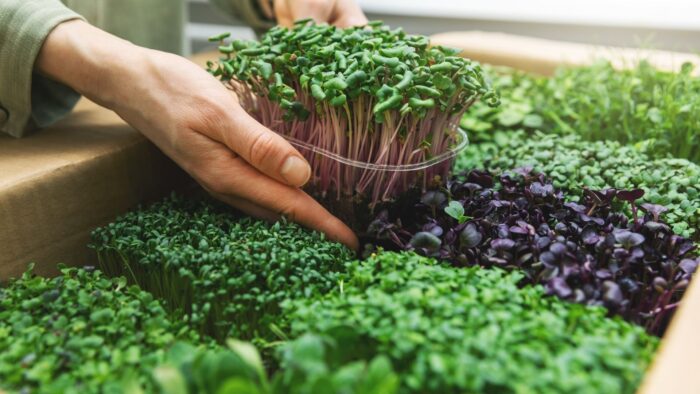
Microgreens are not only packed with nutrients, but they also add a burst of flavor and color to any dish. Here are some delicious ways to use them:
Salads: One of the most popular ways to use microgreens is in salads. They add a fresh, crisp texture and brighten up any bowl of greens. Mix and match different varieties of plants, like arugula, kale, and radish, for a colorful and flavorful salad.
Sandwiches and Wraps: Microgreens can also add a crunchy texture and a pop of flavor to sandwiches and wraps. Use them to replace traditional lettuce or sprouts for an extra boost of nutrition.
Soups and Entrees: They can be used as a garnish for soups and entrees, adding a splash of color and flavor to any dish. Simply sprinkle them on top of your soup or entree just before serving.
Smoothies and Juices: They are a great addition to smoothies and juices, providing an extra boost of nutrition and flavor. Try adding a handful of microgreens to your next green smoothie or juice for an extra nutrient boost.
Omelets and Frittatas: Microgreens can also be added to omelets and frittatas for an extra boost of nutrition and flavor. Mix them into your eggs just before cooking for a colorful and flavorful breakfast.
The possibilities for using microgreens in your cooking are endless. Experiment with different varieties and recipes to discover your favorites. Not only will you be adding a burst of flavor to your dishes, but you’ll also be boosting your nutrition and health.
Conclusion and Next Steps
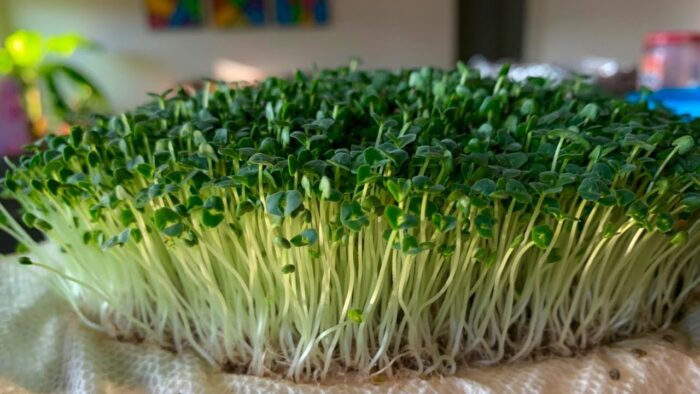
Microgreens are a great way to get started with gardening, even if you don’t have a lot of space or experience. They’re easy to grow, packed with nutrition, and delicious to eat. With the right supplies and a little bit of patience, you can have fresh microgreens year-round. Try experimenting with different varieties and recipes to discover your favorites. Happy gardening!

















